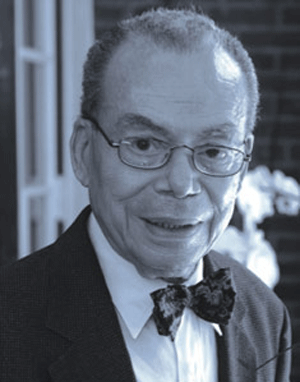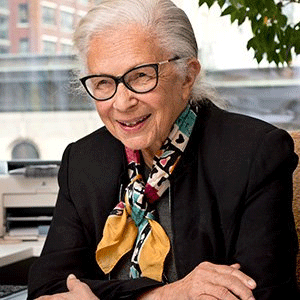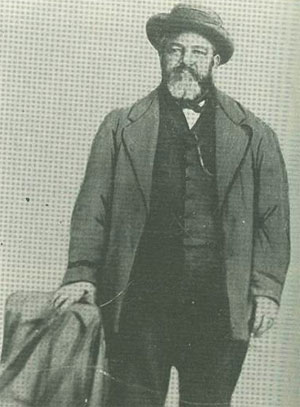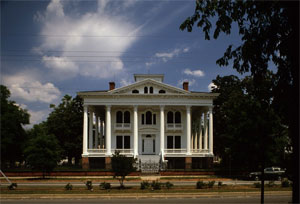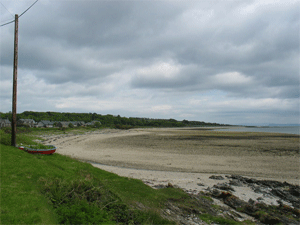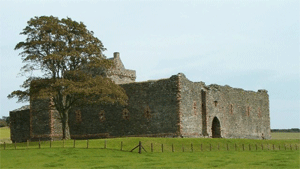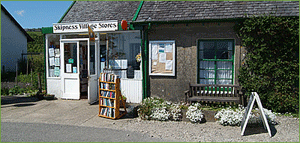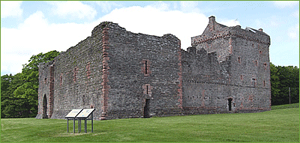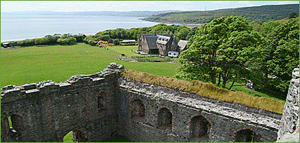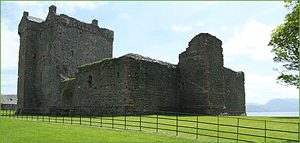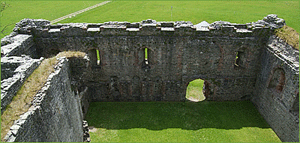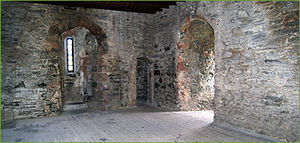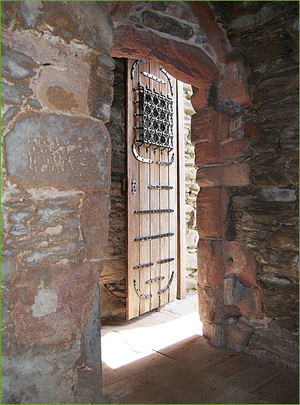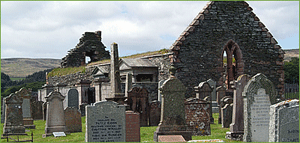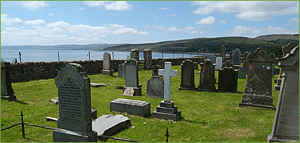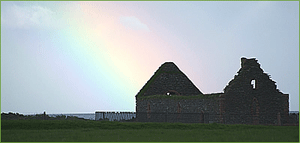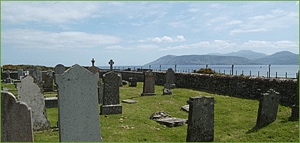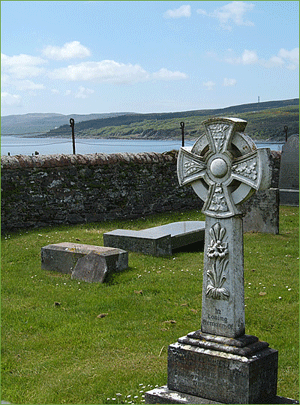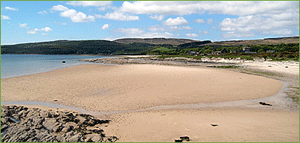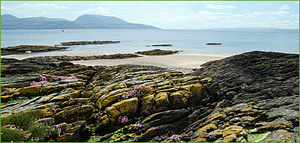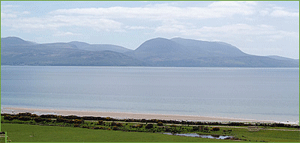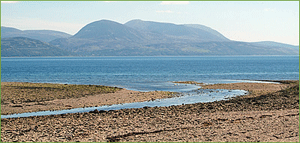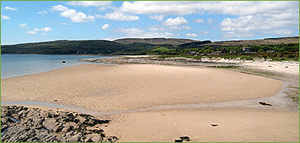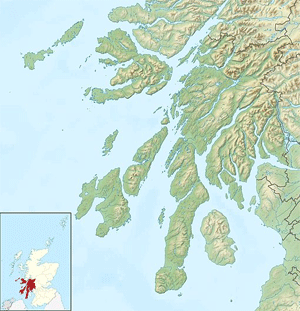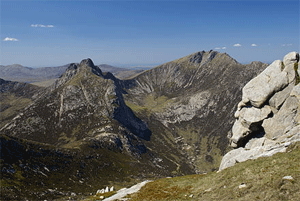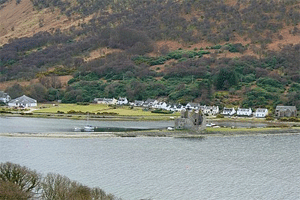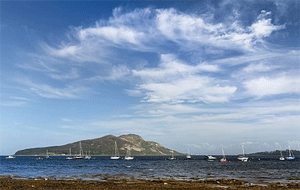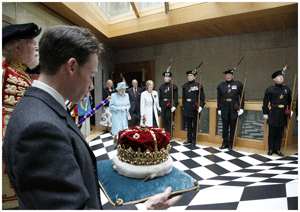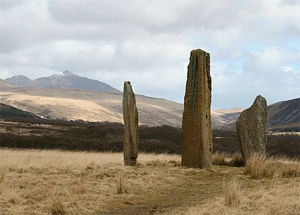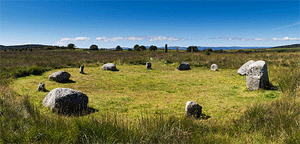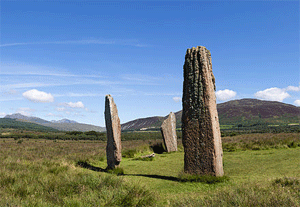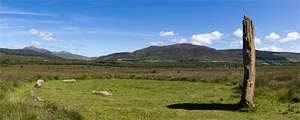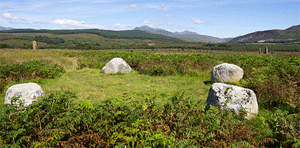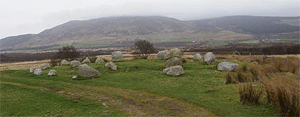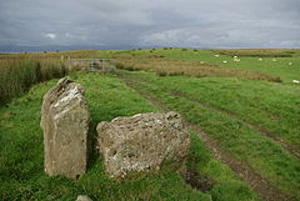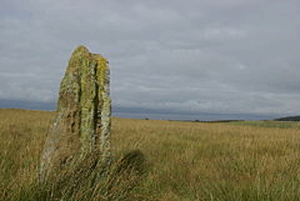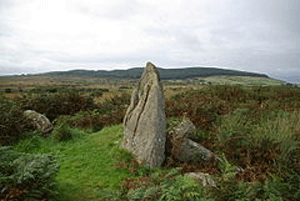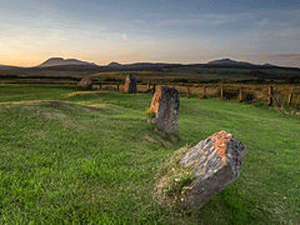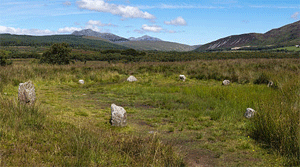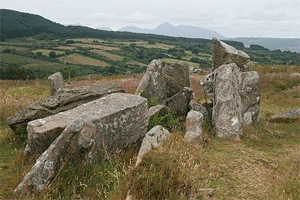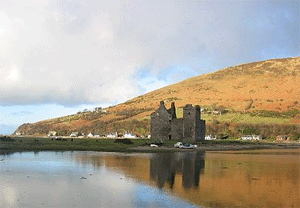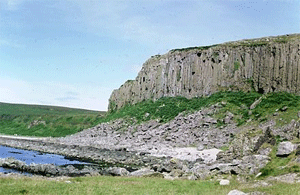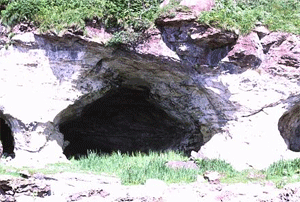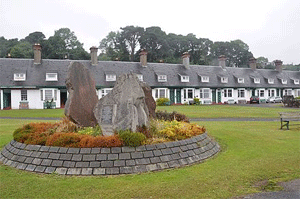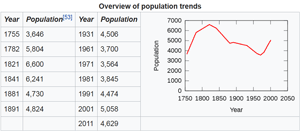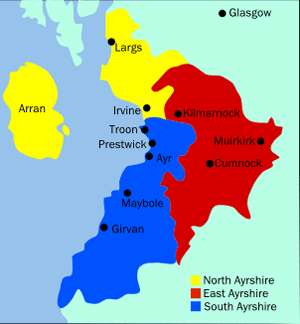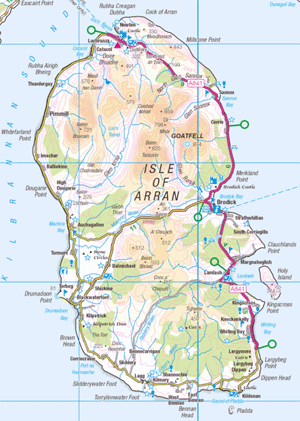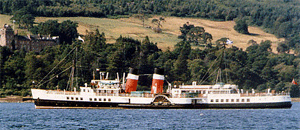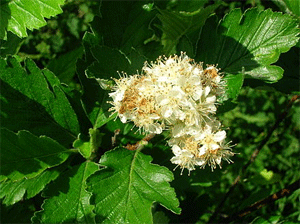Re: The Global Epidemic of Online Hate: This Is Us?
Part 2 of 2
Rockefeller Hall (1903)
A gift from millionaire and philanthropist John D. Rockefeller helped to alleviate the school's ongoing struggle to provide students with adequate student housing. Completed in 1903, Rockefeller Hall served as the men’s dormitory. The three-story brick building had accommodations for 150 students, and also housed a library and a museum.
In Taylor fashion, the design includes large windows that illuminate staircase landings. This dormitory is historically significant to the school, for the ground floor rooms served as the residence of faculty member George Washington Carver for thirty-five years, until his move to Dorothy Hall in 1938. Today the Rockefeller Hall dormitory is an "honors hall" reserved for upperclassmen whose GPAs are 3.2 or higher.
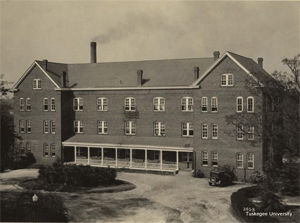
Courtesy Tuskegee University
Rockefeller Hall at Tuskegees Institute, designed by Robert R. Taylor and completed in 1903.
The Emerys (1903-1909)
Located near the main gate of Tuskegee’s campus are the four Emery buildings, which served as men's dormitories. Three were gifts of wealthy American philanthropist Elizabeth Julia Emery, who moved to Europe after having spent the first 20 years of her life in Cincinnati, Ohio. Profoundly impacted by childhood memories of injustice towards blacks she decided at the age of 70 to contribute her wealth to African-American causes.
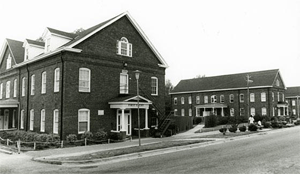
Courtesy Tuskegee University
The Emerys men's dorms at Tuskegee Institute, designed by Robert R. Taylor and completed between 1903 and 1909.
The Emery buildings were designed by Taylor and built by students between 1903 and 1909. All four of the two-story brick cottages featured a hall running through the middle and 40 ample rooms. Today Tuskegee University has embarked on a major renovation project to bring all of the Emery residence halls online.
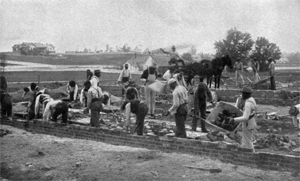
Source: Tuskegee & Its People: Their Ideals and Achievements edited by Bookert T. Washington" (D. Appleton & Co., 1906)
Tuskegee Institute students laying the foundation for one of the four Emery boys' dormitories, designed by Robert R. Taylor.
The Lincoln Gates (c. 1904)
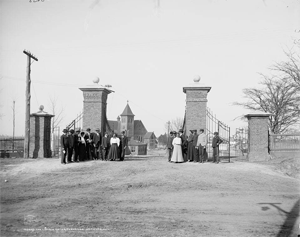
Photo: Frances B. Johnston, courtesy Detroit Publishing Company, Library of Congress
The Lincoln Gates at Tuskegee Institute, designed by Robert R. Taylor and completed around 1904, shown in 1906.
Douglass Hall (1904)
Completed in 1904, Douglass Hall was named after social reformer and statesman Frederick Douglass. The anonymous donor was later discovered to be Quaker-born William Jackson Palmer, a railroad baron and founder of Colorado Springs. The building served as a woman’s dormitory, also housing a large auditorium, and was rebuilt after it burned down in 1934.
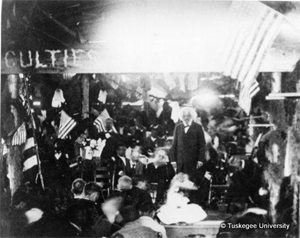
Courtesy Tuskegee University
Frederick Douglass at Tuskegee Institute, ca. 1892.
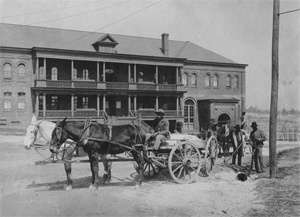
Courtesy Tuskegee University
Douglass Hall at Tuskegee Institute, named after Frederick Douglass, designed by Robert R. Taylor, and completed in 1904.
Collis P. Huntington Memorial Building (1906)
The Collis P. Huntington Memorial Building was a gift from Arabella W. Huntington in memory of her husband. Emmett J. Scott, a Tuskegee administrator, referred to Taylor's architectural contributions as epitomes of the institution's overall commitment to standards of excellence:
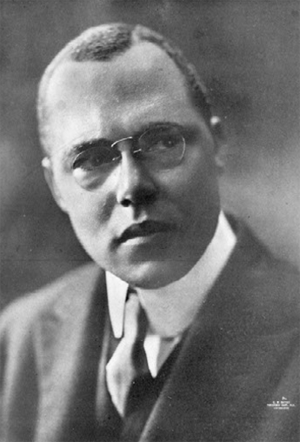
Courtesy Homewood Press and MIT Museum
Emmett Jay Scott was the private secretary of Booker T. Washington, later to serve as Howard University secretary-treasurer, co-founder of the National Negro Business League, and special adviser to President Woodrow Wilson.
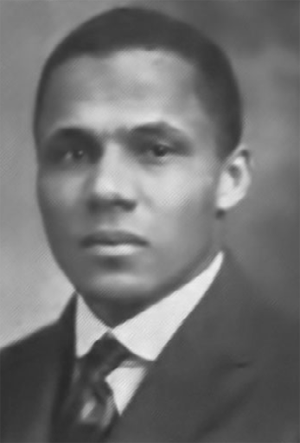
His son Emmett “Scottie” Jay Scott, Jr. '21 (right) would attend MIT as a civil-engineering major and graduate with the Class of 1921.
Scott also highlights the importance of students' direct involvement in the construction of this and other buildings on campus as a special source of pride at Tuskegee:
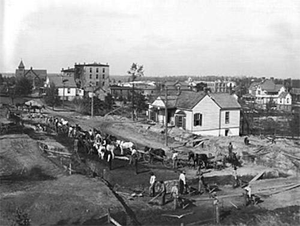
Students digging the foundations for the C.P. Huntington Building at Tuskegee Institute, ca. 1906. Courtesy Library of Congress
As Taylor's administrative responsibilities grew, he counted on the collaboration of local black architects Leo Persley and Sidney Pittman. Persley was originally from Macon, Georgia; Pittman, who married Washington's daughter Portia, had been a student of Taylor's at Tuskegee and his assistant beginning in 1906 or earlier. Taylor was active in a number of projects outside Tuskegee as well, including design and construction of:
• schools and houses in North Carolina, Arkansas, Mississippi, Virginia, and Tennessee;
• Carnegie Libraries at black colleges in Texas and North Carolina;
• the "Negro Building" at the Alabama Agricultural Association Fair in Montgomery, 1906;
• possibly four buildings at Voorhees College, a black school in Denmark, South Carolina;
• in collaboration with Persley, the Masonic Lodge in Birmingham, Alabama, and the Dinkins Memorial Building at Selma University, both in the 1920s.
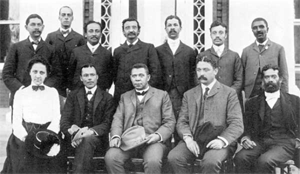
Courtesy Tuskegee University
Tuskegee Executive Council, ca. 1906.
Left to right, top row: Robert R. Taylor, R. M. Attwell, Julius Ramsey, Edgar J. Penney, Matthew T. Driver, Henry G. Maberry, George Washington Carver. Left to Right, bottom row: Jane E. Clark, Emmett J. Scott, Booker T. Washington, Warren Logan, John H. Washington.
Death of Beatrice Rochon Taylor (1906)
In addition to the great pressures of duties as acting principal and acting Supervisor of Industries, as well as serving on Tuskegee's Executive Council, Taylor lost his wife Beatrice in 1906 (possibly due to complications after a miscarriage). He was now a single father of four children. In spite of his bereavement and with the help of his sister-in-law, Taylor went back to work within a week. Biographer Ellen Weiss offers a possible explanation for the reason Taylor's loss is barely mentioned in the Tuskegee Student and in his letters to Washington:
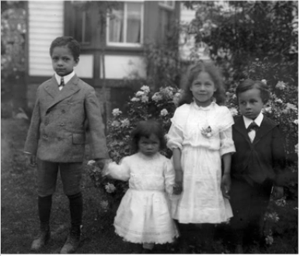
The Taylor Children near the time of their mother's death, 1906. Pictured left to right: Robert Rochon, Helen, Beatrice, and Edward Taylor
Photo: Frances B. Johnston, Courtesy Library of Congress (Frances Benjamin Johnston Collection)
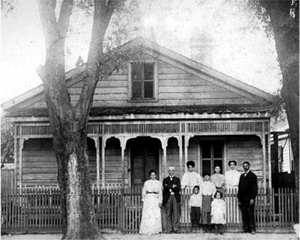
Source: New Hanover County Public Library, Josephine Cooper Collection
Robert R. Taylor (far right) and his family in Wilmington, NC, 1905-07. Also pictured: Taylor's two eldest children (front), Robert Robert Rochon and Helen; Taylor's brother John E. Taylor (second from left), and members of John's family.
Tantum Hall (1907)
Built in 1907, Tantum Hall was used as the women’s dormitory. It has also served as the residence for female faculty members, and as a guesthouse for student and faculty family and friends. Today the Tantum Hall dormitory is an "honors hall" reserved for upperclassmen whose GPAs are 3.2 or higher.
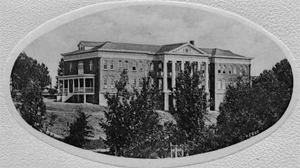
Courtesy Tuskeege University
Tantum Hall at Tuskegee Institute, 1907
Milbank Agriculture Building (1909)
In addition to the Agricultural Department’s classrooms, the Milbank Agriculture Building housed George Washington Carver’s personal laboratory.
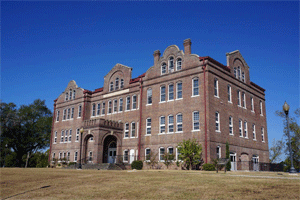
Photo: Erin Harney/Alabama NewsCenter
The Milbank Agriculture Building at Tuskegee Institute, completed in 1909.
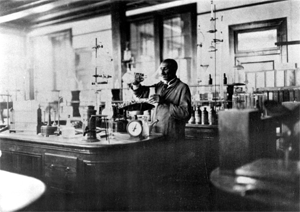
Photo: Erick Butler, Courtesy Tuskegee University
George Washington Carver at work in his laboratory, located in the Milbank Agriculture Building at Tuskegee Institute.
Tompkins Hall (1910)
Tompkins Hall was completed in 1910 as Tuskegee's main dining facility. Located on the ground floor was a 2,500-seat audience hall. The top level housed two dining halls, one for students (1,500 seating capacity) and the other for faculty (180 seating capacity).
At the dedication of Tompkins Hall, Tuskegee trustee Robert C. Ogden called Taylor up to the platform for a display of special appreciation for Taylor's other architectural achievements on campus.
Already serving as a central point on campus, the building was later transformed into the Student Union.
White Hall (1910)
The children of Alexander Moss White--Harvard graduate, New York investment banker, and museum executive--donated funds for White Hall. Tuskegee students, faculty and staff completed the Taylor-designed building, which opened in 1909 and was dedicated in 1910. The stately clock tower was added three years later. It had a manual winding system, but was converted to electric in 1951 and still chimes today. The 104-room building continues to serve as the premiere female residence hall, housing students with a GPA of 3.2 or higher.
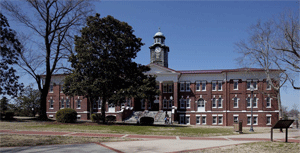
Photo: Carol M. Highsmith, Courtesy Library of Congress
White Hall at Tuskegee Institute, completed in 1910.
MIT CONGRESS ANNIVERSARY SPEECH: THE SCIENTIFIC DEVELOPMENT OF THE NEGRO, 1911

Technology and Industrial Efficiency cover
In 1911, MIT invited Taylor to speak at its 50th anniversary celebration. The Congress of Technology, as the occasion was billed, provided an opportunity to lay MIT's accomplishments before a gathering of MIT graduates, students, faculty, and friends.
Over two days, speakers reflected on the MIT experience and its relationship to a number of contemporary issues in science and technology. As one of the fifty invited alumni and faculty, Taylor was the lone black speaker at the Congress, delivering a paper entitled The Scientific Development of the Negro.
A lone female voice was also included: Ellen Swallow Richards had been scheduled to deliver a paper entitled "The Elevation of Applied Science to an Equal Rank with the So-Called Learned Professions." (The paper was printed in the proceedings, but Richards did not appear at the Congress. She died unexpectedly in March of 1911.)
Taylor began his paper by reflecting on the overall history of the black experience from slavery up to the present, almost half a century since the end of the Civil War. He laid out an insightful analysis of problems and prospects--the challenges and responsibilities facing blacks within the new social order:
Taylor's ideas about the evolving framework of educational and professional opportunities for blacks appear to have marked an important middle ground in the polarized debate carried on at the time by Booker T. Washington (industrial emphasis) and W. E. B. Du Bois (intellectual emphasis). He drew from both leaders' philosophies, which he viewed as complementary rather than as conflicting.
CONTINUING TO BUILD TUSKEGEE: 1912-1928
Marriage to Nellie G. Chestnutt (1912)
Six years after the sudden loss of his wife Beatrice, Taylor remarried in 1912. Nellie Green Chestnutt of Wilmington was also a schoolteacher. The couple would have one child, Henry Chestnut Taylor.
John A. Andrew Memorial Hospital (1913)
In 1892, as Taylor was just graduating from MIT, Tuskegee opened the first hospital for African Americans in Alabama. It provided medical facilities for black physicians, who often had little or no access to such in segregated, white-operated institutions, including the public hospitals that catered to black patients. The Tuskegee Institute Hospital and Nurse Training School also provided care for the school’s faculty and students, along with training for black nurses (later expanding to serve the local community). It was renamed in honor of the John A. Andrew, the governor of Massachusetts whose granddaughter made the gift (she was the wife of Charles Mason of Boston, a Tuskegee Institute trustee).
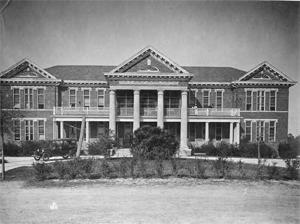
Courtesy Tuskegee University
The John A. Andrew Memorial Hospital at Tuskegee Institute.
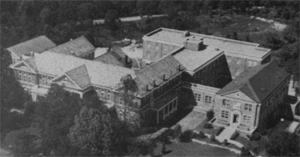
Aerial view of the John A. Andrew Memorial Hospital at Tuskegee Institute. Courtesy Tuskegee University
In 1987, the John A. Andrew Memorial Hospital was closed. Its complex now houses Tuskegee University's National Center for Bioethics in Research and Health Care, as well as the Tuskegee University Legacy Museum.
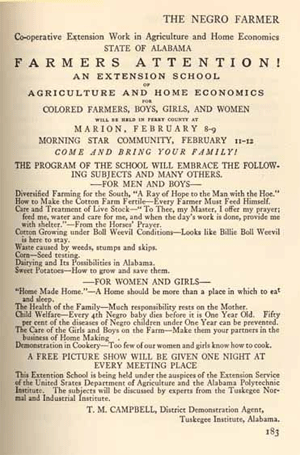
Page From the Negro Farmer
The Negro Farmer (1914)
In 1913, Taylor was handpicked by Washington as one of five directors of a new periodical, Negro Farmer, slated to begin publication in February 1914. Taylor was the lone faculty member on the board; the others were top Tuskegee administrators: Washington, president; Emmett J. Scott, vice president; Charles H. Gibson, secretary; and Warren Logan, treasurer. The journal was linked to Tuskegee's Agricultural Extension School programs carried out to black farmers throughout Alabama.
New Laundry / George Washington Carver Museum (1915)
Constructed in 1915 as a laundry facility, the New Laundry building was remodeled to a large extent in the same year. In 1938, the Institute designated the building as the George Washington Carver Museum. Beginning in 1938, Carver himself oversaw the conversion of the building into a combined museum and laboratory. The building was officially dedicated in his name in 1941, two years before his death. In 1947, a fire originating in a basement student laboratory heavily damaged the building's interior, which was later remodeled. In 1974 the National Park Service acquired Carver Museum as a part of the Tuskegee Institute National Historic Site.
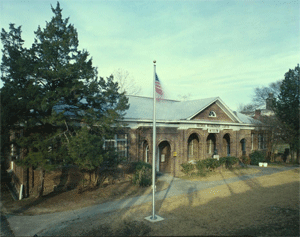
Courtesy Library of Congress
The New Laundry was constructed at Tuskegee Institute in 1915 (later designated as the George Washington Carver Museum), shown here after 1933.
Agricultural Campus and James Hall (1921)
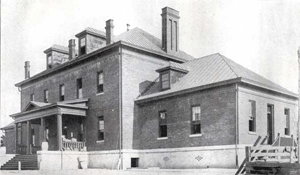
Courtesy Tuskegee University
The Agricultural Campus at Tuskegee Institute, completed in 1921.
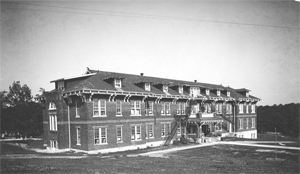
Tuskegee University
Ellen Curtis James Hall, completed in 1921, was a nursing student dormitory located near the John A. Andrew Memorial Hospital.
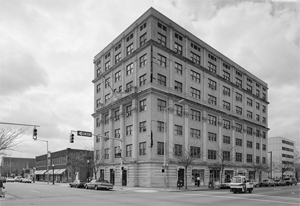
The Colored Masonic Temple in Birmingham, Alabama. Courtesy Library of Congress
This Renaissance-Revival-style building was completed in 1922 and designed by Robert R. Taylor in collaboration with his former Tuskegee student, Leo Persley--both were the state's only two professional black architects at the time. A symbol of black prosperity in the segregated South, the project was both funded and constructed by members of the black community. Throughout its history, the National Register-listed building provided shelter to activists, politicians, and common citizens. It housed the Booker T. Washington Library (now Smithfield Library) for about 30 years.
VICE-PRINCIPAL OF TUSKEGEE INSTITUTE: 1925
In 1925, Taylor became Vice-Principal of Tuskegee Institute. In addition to carrying out teaching and administrative duties, he continued to design buildings on campus.
Sage Hall (1926)
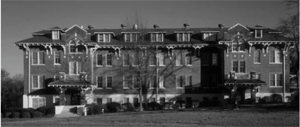
Courtesy Tuskegee University
Sage Hall at Tuskegee Institute, completed in 1926.
Chambliss Children's House (1928)
Constructed in 1928, the brick structure replaced the Children’s House originally built in 1901 (during the period Taylor was away in Cleveland). The new building was a gift from wealthy Tuskegee alum William V. Chambliss. In 1930, it housed a public elementary school, as well as a practice facility for students in the Department of Education. Many children of black professionals in the area were enrolled here. The building later served as the home of the College of Business.
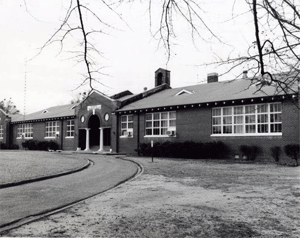
Courtesy Tuskegee University
Chambliss Children's House at Tuskegee Institute, completed in 1928.
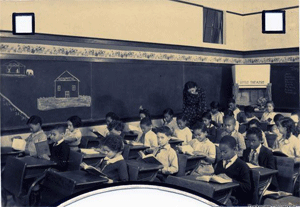
Young students at the Chambliss Children's House, where many black professionals in the Tuskegee Institute area enrolled their children. Courtesy Tuskegee University
Wilcox Trade Buildings (1928)
The Wilcox Trade Buildings were the last set of structures constructed by Tuskegee Institute students.
LIBERIA: 1929
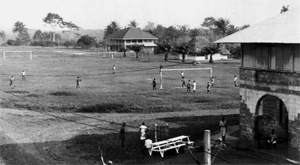
Courtesy Library of Congress, Prints and Photographs Division
The Booker Washington Agricultural & Industrial Institute campus in Kakata, Liberia, ca. 1940.
During the 1920s, Liberian President Charles D. B. King visited the United States and toured the Tuskegee Institute. Upon his return to Liberia, he hired Taylor, to design a campus for a similar school in Kakata. The Liberian government donated 1,000 acres for the proposed Booker Washington Agricultural & Industrial Institute (BWI). This "Tuskegee of Africa" was under the joint sponsorship of the Phelps-Stokes Fund, the Liberian government, and the Firestone Rubber Corporation (which had opened the world's largest rubber plantation in Liberia in 1926). Other supporters included the American Colonization Society, missionary boards, and individuals.
In 1929, Taylor and his wife Nellie traveled to Liberia, where he was to lay out architectural plans and to devise a program in industrial training for the school. They would stay in Liberia for only 39 days. Established in 1822 by freed American slaves, the Liberia the Taylors arrived to was a politically unstable country with very little working infrastructure and in the grip of a mild yellow-fever epidemic (it flared up again after their departure, claiming the lives of some of his new friends).
Taylor's recommendations for initial construction of the school included academic and agricultural buildings and staff housing, followed by a hospital, shops, and a dormitory.
BWI was Liberia's first agricultural and vocational school. It was also the largest secondary school in the country during the first part of the 21st century and has been transitioning to a community college curriculum as of 2014.
The Liberia project cemented Taylor's reputation among African Americans in the U.S., earning him an honorary doctorate from Lincoln University.
SWEET HOME ALABAMA: 1931-1932
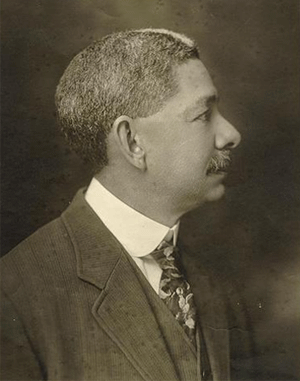
Photo: Frances B. Johnston, Courtesy Tuskegee University
Logan Hall (1931)
Logan Hall was named after Warren Logan, then the retired treasurer of Tuskegee Institute. The building served as a gymnasium and auditorium with a seating capacity of 3,500, and was the second home of the Tuskegee Basketball Golden Tigers and Tigerettes from 1931 until 1987.
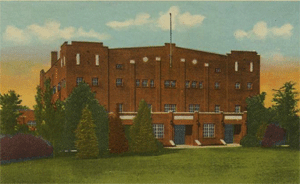
Courtesy Alabama Department of Archives and History
Logan Hall at Tuskegee Institute, completed in 1931.
Armstrong Science Building (1932)
The Armstrong Science Building, a boys' dormitory, is a three-story brick building with multiple chimneys and a double front porch. Samuel C. Armstrong
Hollis Burke Frissell Library (1932)
Today the Frissell Library serves as Tuskegee University's main library. Constructed in 1932, the building was named after Hollis Burke Frissell, the second principal of Hampton Institute. In 2001, after a 4.5-million-dollar renovation, the facility was officially renamed the Ford Motor Company Library/Learning Resource Center.

Courtesy Tuskegee University
The Hollis Burke Frissell Library at Tuskegee Institute is known today as the Ford Motor Company Library.
LATER YEARS: 1929-1942
After the Mississippi Valley flood of 1927, Taylor served on the Mississippi Valley Flood Relief Commission appointed by President Herbert Hoover. Taylor also served as chairman of the Tuskegee chapter of the American Red Cross. In 1929, he was awarded an honorary doctorate by Lincoln University in Pennsylvania for his work in Liberia.
After suffering a heart attack in 1932, Taylor retired from Tuskegee. He moved back to his native Wilmington, North Carolina. He began to devote more of his time to civic work, publishing pieces on social justice issues in various newspapers. In 1935, the governor of North Carolina appointed him to the board of trustees of Fayetteville State Teachers College. Taylor was also a trustee of Chestnut Street Presbyterian Church in Wilmington and treasurer of the local "colored" library board. He was a mason, as well as a member of the Phi Gamma Mu and Phi Beta Sigma fraternities, the Society of Arts in Boston, the American Economic Society, and the Business League of Tuskegee.
Throughout his life, he had retained a deep respect for MIT. In 1942, less than a decade after his retirement from Tuskegee, he wrote to the secretary of his MIT class indicating that he had just been released from treatment for an unspecified illness at the Mayo Clinic in Rochester, Minnesota. "Thanks to a kind Providence and skillful physicians," he said, "I am much better now.”
Not long afterwards--on December 13, 1942--Taylor collapsed while attending services at the Tuskegee Chapel, the building that he considered his outstanding achievement as an architect. He died that same day at the John A. Andrew Memorial Hospital, also designed by his own hand.
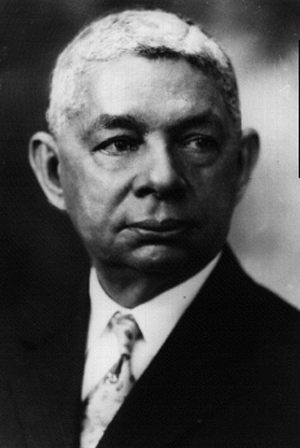
Robert R. Taylor in his later years. Courtesy MIT Museum
Taylor's widow Neliie wrote to MIT president Karl Taylor Compton from the Taylor home in Wilmington. She enclosed some clippings from the local press, including one from the Cape-Fear Journal that read:
THE ROBERT TAYLOR HOMES: 1957-2005
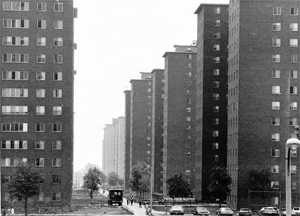
Photo: Walter Kale/Chicago Tribune
The Robert Taylor Homes in Chicago, IL
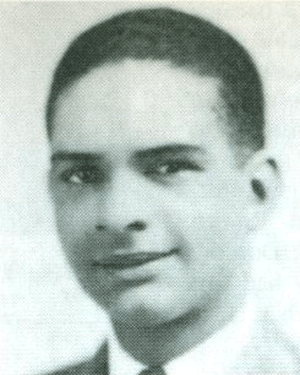
Robert Rochon Taylor
In 1942, the year of Taylor’s death, his son Robert Rochon Taylor became the first African-American Chairman of the Chicago Housing Authority. Rochon was an architect and civic leader in Chicago, Illinois. He resigned in 1950, when the city council refused to endorse potential building locations throughout the city of Chicago that would induce racially integrated housing.
Two years after his death in 1957, the Robert Taylor Homes were initiated despite protests from the Chicago Defender and the Welfare Council of Metropolitan Chicago. Given his support for scattered-site public housing, Robert Rochon Taylor would also have opposed what became the largest federal public housing project in the world named in his and his father's honor. Built to house 11,000, the Robert Taylor Homes were occupied by 27,000 tenants at its height in 1965. By 2007 the last of the development's buildings were finally demolished. The Robert Taylor Homes had once been home to a number of public figures, including former Massachusetts Governor Deval Patrick, MIT's 2009 Commencement keynote speaker.
LEGACY: MIT AND TUSKEGEE UNIVERSITY
The Robert R. Taylor Endowed Chair at MIT
In 1994, MIT endowed a chair for minority faculty in Robert R. Taylor’s name. It is the first chair at the Institute named in honor of an African-American. The inaugural holder of the position was Julliard-trained Marcus Aurelius Thompson, an internationally acclaimed violist and chamber music player. Thompson founded performance programs in private studies and chamber music at MIT, and is presently an Institute Professor.
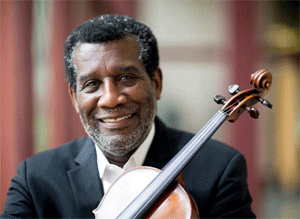
Photo: Bryce Vickmark/MIT News Office
Marcus A. Thompson, Institute Professor
The Robert R. Taylor (1892) Fellowship at MIT
In 2011, MIT also established the Robert R. Taylor (1892) Fellowship in the School of Architecture + Planning, appointing then visiting professor Walter J. Hood, Jr. as its inaugural fellow. Hood, Jr. advocates the art of "improvisation" as a design process for making urban landscapes and architecture. Philip Ewing, an architecture graduate student in Design Computation, was the fellow for 2014.
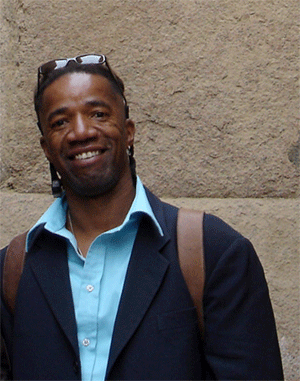
Walter J. Hood, Jr., inaugural Robert R. Taylor (1892) Fellow. He is Professor and former Chair of Landscape Architecture at the University of California, Berkeley, and principal of Hood Design Studio in Oakland, CA.
Photo: Hood Design
The Robert R. Taylor School of Architecture & Construction Science at Tuskegee University
In 2010, Tuskegee University elevated its departments of architecture and construction science from the College of Engineering, Architecture and Physical Sciences (CEAPS) to the Robert R. Taylor School of Architecture and Construction Science (TSACS). The school is located in the Taylor-designed Wilcox A, C and partially in E former trades buildings, originally built in 1928. It is home to one of only two NAAB-accredited, architecture professional degree programs in the state of Alabama, as well as to one of the top Construction Science and Management degree programs in the nation.
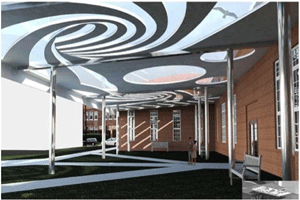
Courtesy Tuskegee University
The Taylor School of Architecture and Construction Science (TSACS) at Tuskegee University
Robert R. Taylor USPS Forever® Stamp
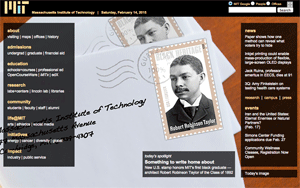
MIT News Office
"Something to write home about": MIT Spotlight homepage featuring the Robert R. Taylor commemorative U.S. postal stamp, 14 February 2015. Courtesy MIT News
The limited-edition Forever® U.S. Postal Stamp commemorating Robert R. Taylor is the 38th addition to the postal service’s Black Heritage Series. The stamp was officially introduced on February 12, 2015 at the Smithsonian National Postal Museum in Washington, D.C. Among the ceremony attendees were MIT president L. Rafael Reif and Tuskegee University president Dr. Brian L. Johnson. Another attendee of note was Valerie Jarrett, Taylor's great granddaughter and senior advisor to President Barack Obama. At a second inauguration on the evening of the 2015 stamp launch, Jarrett initiated the ribbon cutting to open the Smithsonian National Postal Museum’s “Freedom Just Around the Corner” gallery exhibit.
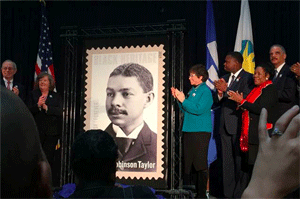
Courtesy Tuskegee University
Official unveiling of the Robert Taylor postage stamp at the Smithsonian National Postal Museum in Washington, D.C., 12 February 2015. Pictured: L. Rafael Reif, MIT President (far left); Valerie Jarrett, great-granddaughter of Robert R. Taylor and then Senior Advisor to the U.S. President (4th from right); Eric Holder, 83rd U.S. Attorney General (far right).
On May 13, 2015, MIT also hosted an event at the Stratton Student Center, featuring remarks by Hashim Sarkis, dean of the MIT School of Architecture and Planning; E. Denise Simmons, Cambridge city councillor; and Katherine Lydon, postmaster for the City of Cambridge. Lydon proposed renaming the post office at the MIT Stratton Student Center after Taylor.
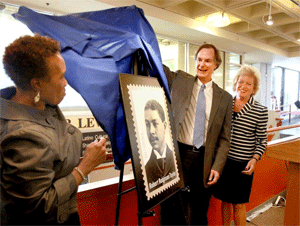
Robert R. Taylor stamp unveiling at MIT, 13 May 2015. Photo: John Blanding/The Boston Globe
Pictured left to right: E. Denise Simmons, Cambridge City Councillor; Edmund Bertschinger, MIT Institute Community and Equity Officer; and Katherine Lydon, Postmaster for the City of Cambridge.
In Popular Culture
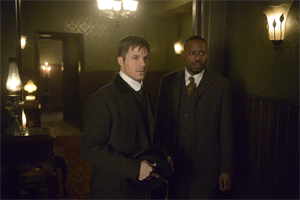
Rufus Carlin in "Timeless"
Source: NBC
In the NBC series Timeless, MIT alum Rufus Carlin (played by Malcolm Barrett) is the pilot of a time machine. Born in Chicago in 1983, Rufus is often not enthusiastic about traveling back in time as a black man, as he has to succumb to racism. In Season I, Episode 11- "The World’s Columbian Exposition" (aired January 16 2017), Rufus goes back to the 1800s. When another character mistakens Rufus for Robert Robinson Taylor, Rufus responds by saying: "No, I'm the other black guy".
EPILOGUE: VALERIE JARRETT
Rockefeller Hall (1903)
A gift from millionaire and philanthropist John D. Rockefeller helped to alleviate the school's ongoing struggle to provide students with adequate student housing. Completed in 1903, Rockefeller Hall served as the men’s dormitory. The three-story brick building had accommodations for 150 students, and also housed a library and a museum.
In Taylor fashion, the design includes large windows that illuminate staircase landings. This dormitory is historically significant to the school, for the ground floor rooms served as the residence of faculty member George Washington Carver for thirty-five years, until his move to Dorothy Hall in 1938. Today the Rockefeller Hall dormitory is an "honors hall" reserved for upperclassmen whose GPAs are 3.2 or higher.

Courtesy Tuskegee University
Rockefeller Hall at Tuskegees Institute, designed by Robert R. Taylor and completed in 1903.
The Emerys (1903-1909)
Located near the main gate of Tuskegee’s campus are the four Emery buildings, which served as men's dormitories. Three were gifts of wealthy American philanthropist Elizabeth Julia Emery, who moved to Europe after having spent the first 20 years of her life in Cincinnati, Ohio. Profoundly impacted by childhood memories of injustice towards blacks she decided at the age of 70 to contribute her wealth to African-American causes.

Courtesy Tuskegee University
The Emerys men's dorms at Tuskegee Institute, designed by Robert R. Taylor and completed between 1903 and 1909.
The Emery buildings were designed by Taylor and built by students between 1903 and 1909. All four of the two-story brick cottages featured a hall running through the middle and 40 ample rooms. Today Tuskegee University has embarked on a major renovation project to bring all of the Emery residence halls online.

Source: Tuskegee & Its People: Their Ideals and Achievements edited by Bookert T. Washington" (D. Appleton & Co., 1906)
Tuskegee Institute students laying the foundation for one of the four Emery boys' dormitories, designed by Robert R. Taylor.
The Lincoln Gates (c. 1904)
In 1906, Frances Benjamin Johnston photographed the [Lincoln] gates from an angle so that the central piers framed Dorothy Hall's rear and the Chapel, nesting at least these three Stokes [family] donations...[The Stokes Sisters had] suggested the name "Lincoln" because he had opened opportunities for the race...
-- Ellen Weiss, Robert R. Taylor and Tuskegee (NewSouth Books, 2012)

Photo: Frances B. Johnston, courtesy Detroit Publishing Company, Library of Congress
The Lincoln Gates at Tuskegee Institute, designed by Robert R. Taylor and completed around 1904, shown in 1906.
Douglass Hall (1904)
Completed in 1904, Douglass Hall was named after social reformer and statesman Frederick Douglass. The anonymous donor was later discovered to be Quaker-born William Jackson Palmer, a railroad baron and founder of Colorado Springs. The building served as a woman’s dormitory, also housing a large auditorium, and was rebuilt after it burned down in 1934.

Courtesy Tuskegee University
Frederick Douglass at Tuskegee Institute, ca. 1892.

Courtesy Tuskegee University
Douglass Hall at Tuskegee Institute, named after Frederick Douglass, designed by Robert R. Taylor, and completed in 1904.
Collis P. Huntington Memorial Building (1906)
The Collis P. Huntington Memorial Building was a gift from Arabella W. Huntington in memory of her husband. Emmett J. Scott, a Tuskegee administrator, referred to Taylor's architectural contributions as epitomes of the institution's overall commitment to standards of excellence:
The most pretentious building owned by the Institute is the Collis P. Huntington Memorial Building, the new home of the Academic Department...There is everything about the exterior and interior that must awaken a sense of pride in every pupil who enters its portals. Its facilities are sensible and unostentatious, yet they meet every requirement of the department.
-- Emmett J. Scott, Tuskegee and Its People, 1906

Courtesy Homewood Press and MIT Museum
Emmett Jay Scott was the private secretary of Booker T. Washington, later to serve as Howard University secretary-treasurer, co-founder of the National Negro Business League, and special adviser to President Woodrow Wilson.

His son Emmett “Scottie” Jay Scott, Jr. '21 (right) would attend MIT as a civil-engineering major and graduate with the Class of 1921.
Scott also highlights the importance of students' direct involvement in the construction of this and other buildings on campus as a special source of pride at Tuskegee:
[T]he idea that only the best is worth having and striving for is emphasized as an object-lesson and principle with such insistence that it becomes an actual part of a student's training and life.

Students digging the foundations for the C.P. Huntington Building at Tuskegee Institute, ca. 1906. Courtesy Library of Congress
As Taylor's administrative responsibilities grew, he counted on the collaboration of local black architects Leo Persley and Sidney Pittman. Persley was originally from Macon, Georgia; Pittman, who married Washington's daughter Portia, had been a student of Taylor's at Tuskegee and his assistant beginning in 1906 or earlier. Taylor was active in a number of projects outside Tuskegee as well, including design and construction of:
• schools and houses in North Carolina, Arkansas, Mississippi, Virginia, and Tennessee;
• Carnegie Libraries at black colleges in Texas and North Carolina;
• the "Negro Building" at the Alabama Agricultural Association Fair in Montgomery, 1906;
• possibly four buildings at Voorhees College, a black school in Denmark, South Carolina;
• in collaboration with Persley, the Masonic Lodge in Birmingham, Alabama, and the Dinkins Memorial Building at Selma University, both in the 1920s.

Courtesy Tuskegee University
Tuskegee Executive Council, ca. 1906.
Left to right, top row: Robert R. Taylor, R. M. Attwell, Julius Ramsey, Edgar J. Penney, Matthew T. Driver, Henry G. Maberry, George Washington Carver. Left to Right, bottom row: Jane E. Clark, Emmett J. Scott, Booker T. Washington, Warren Logan, John H. Washington.
Death of Beatrice Rochon Taylor (1906)
In addition to the great pressures of duties as acting principal and acting Supervisor of Industries, as well as serving on Tuskegee's Executive Council, Taylor lost his wife Beatrice in 1906 (possibly due to complications after a miscarriage). He was now a single father of four children. In spite of his bereavement and with the help of his sister-in-law, Taylor went back to work within a week. Biographer Ellen Weiss offers a possible explanation for the reason Taylor's loss is barely mentioned in the Tuskegee Student and in his letters to Washington:
Even with habitual inattention to this quiet man's labors, the sparse coverage given his tragedy...surprises...[T]hese laconic snippets suggest a man not only willing to remain in the background but actively bent on doing so.
-- Ellen Weiss, Robert Taylor and Tuskegee (NewSouth Books, 2011)

The Taylor Children near the time of their mother's death, 1906. Pictured left to right: Robert Rochon, Helen, Beatrice, and Edward Taylor
Photo: Frances B. Johnston, Courtesy Library of Congress (Frances Benjamin Johnston Collection)

Source: New Hanover County Public Library, Josephine Cooper Collection
Robert R. Taylor (far right) and his family in Wilmington, NC, 1905-07. Also pictured: Taylor's two eldest children (front), Robert Robert Rochon and Helen; Taylor's brother John E. Taylor (second from left), and members of John's family.
Tantum Hall (1907)
Built in 1907, Tantum Hall was used as the women’s dormitory. It has also served as the residence for female faculty members, and as a guesthouse for student and faculty family and friends. Today the Tantum Hall dormitory is an "honors hall" reserved for upperclassmen whose GPAs are 3.2 or higher.

Courtesy Tuskeege University
Tantum Hall at Tuskegee Institute, 1907
Milbank Agriculture Building (1909)
In addition to the Agricultural Department’s classrooms, the Milbank Agriculture Building housed George Washington Carver’s personal laboratory.

Photo: Erin Harney/Alabama NewsCenter
The Milbank Agriculture Building at Tuskegee Institute, completed in 1909.
I remember my father telling me about this great man George Washington Carver and taking me to the Institute to his laboratory...[he had] a model, miniature house that children could play in...I have some sense of "there are such people in this world"...Tuskegee was a very important kind of anchor for me.
-- Willard R. Johnson, MIT Political Science Professor in Technology and the Dream, 1996

Photo: Erick Butler, Courtesy Tuskegee University
George Washington Carver at work in his laboratory, located in the Milbank Agriculture Building at Tuskegee Institute.
Tompkins Hall (1910)
Tompkins Hall was completed in 1910 as Tuskegee's main dining facility. Located on the ground floor was a 2,500-seat audience hall. The top level housed two dining halls, one for students (1,500 seating capacity) and the other for faculty (180 seating capacity).
At the dedication of Tompkins Hall, Tuskegee trustee Robert C. Ogden called Taylor up to the platform for a display of special appreciation for Taylor's other architectural achievements on campus.
Already serving as a central point on campus, the building was later transformed into the Student Union.
MR. [ROBERT] TAYLOR OCCUPIES IN THE NEGRO RACE IN ARCHITECTURE THE POSITION WHICH [HENRY OSSAWA] TANNER HOLDS IN PAINTING AND [PAUL LAURENCE] DUNBAR ATTAINED UNTO IN POETRY.
-- "Real Builders of Tuskegee," Tuskegee Alumni Bulletin 2 (Jan.-March 1915)
White Hall (1910)
The children of Alexander Moss White--Harvard graduate, New York investment banker, and museum executive--donated funds for White Hall. Tuskegee students, faculty and staff completed the Taylor-designed building, which opened in 1909 and was dedicated in 1910. The stately clock tower was added three years later. It had a manual winding system, but was converted to electric in 1951 and still chimes today. The 104-room building continues to serve as the premiere female residence hall, housing students with a GPA of 3.2 or higher.

Photo: Carol M. Highsmith, Courtesy Library of Congress
White Hall at Tuskegee Institute, completed in 1910.
MIT CONGRESS ANNIVERSARY SPEECH: THE SCIENTIFIC DEVELOPMENT OF THE NEGRO, 1911

Technology and Industrial Efficiency cover
In 1911, MIT invited Taylor to speak at its 50th anniversary celebration. The Congress of Technology, as the occasion was billed, provided an opportunity to lay MIT's accomplishments before a gathering of MIT graduates, students, faculty, and friends.
Over two days, speakers reflected on the MIT experience and its relationship to a number of contemporary issues in science and technology. As one of the fifty invited alumni and faculty, Taylor was the lone black speaker at the Congress, delivering a paper entitled The Scientific Development of the Negro.
A lone female voice was also included: Ellen Swallow Richards had been scheduled to deliver a paper entitled "The Elevation of Applied Science to an Equal Rank with the So-Called Learned Professions." (The paper was printed in the proceedings, but Richards did not appear at the Congress. She died unexpectedly in March of 1911.)
Taylor began his paper by reflecting on the overall history of the black experience from slavery up to the present, almost half a century since the end of the Civil War. He laid out an insightful analysis of problems and prospects--the challenges and responsibilities facing blacks within the new social order:
[After slavery he] began to think of his old way of living and to hope for a new order. The ability to reach out and develop new lines of work, to study the things by which he was surrounded and to make the most of them...(in other words, the secrets of chemistry, of physics, of mathematics, of the principles of mechanics), all this was to him a closed book...Constantly under the will of another...there was no place for that highest of opportunities...
Taylor's ideas about the evolving framework of educational and professional opportunities for blacks appear to have marked an important middle ground in the polarized debate carried on at the time by Booker T. Washington (industrial emphasis) and W. E. B. Du Bois (intellectual emphasis). He drew from both leaders' philosophies, which he viewed as complementary rather than as conflicting.
CONTINUING TO BUILD TUSKEGEE: 1912-1928
Marriage to Nellie G. Chestnutt (1912)
Six years after the sudden loss of his wife Beatrice, Taylor remarried in 1912. Nellie Green Chestnutt of Wilmington was also a schoolteacher. The couple would have one child, Henry Chestnut Taylor.
John A. Andrew Memorial Hospital (1913)
In 1892, as Taylor was just graduating from MIT, Tuskegee opened the first hospital for African Americans in Alabama. It provided medical facilities for black physicians, who often had little or no access to such in segregated, white-operated institutions, including the public hospitals that catered to black patients. The Tuskegee Institute Hospital and Nurse Training School also provided care for the school’s faculty and students, along with training for black nurses (later expanding to serve the local community). It was renamed in honor of the John A. Andrew, the governor of Massachusetts whose granddaughter made the gift (she was the wife of Charles Mason of Boston, a Tuskegee Institute trustee).

Courtesy Tuskegee University
The John A. Andrew Memorial Hospital at Tuskegee Institute.

Aerial view of the John A. Andrew Memorial Hospital at Tuskegee Institute. Courtesy Tuskegee University
In 1987, the John A. Andrew Memorial Hospital was closed. Its complex now houses Tuskegee University's National Center for Bioethics in Research and Health Care, as well as the Tuskegee University Legacy Museum.

Page From the Negro Farmer
The Negro Farmer (1914)
In 1913, Taylor was handpicked by Washington as one of five directors of a new periodical, Negro Farmer, slated to begin publication in February 1914. Taylor was the lone faculty member on the board; the others were top Tuskegee administrators: Washington, president; Emmett J. Scott, vice president; Charles H. Gibson, secretary; and Warren Logan, treasurer. The journal was linked to Tuskegee's Agricultural Extension School programs carried out to black farmers throughout Alabama.
New Laundry / George Washington Carver Museum (1915)
Constructed in 1915 as a laundry facility, the New Laundry building was remodeled to a large extent in the same year. In 1938, the Institute designated the building as the George Washington Carver Museum. Beginning in 1938, Carver himself oversaw the conversion of the building into a combined museum and laboratory. The building was officially dedicated in his name in 1941, two years before his death. In 1947, a fire originating in a basement student laboratory heavily damaged the building's interior, which was later remodeled. In 1974 the National Park Service acquired Carver Museum as a part of the Tuskegee Institute National Historic Site.

Courtesy Library of Congress
The New Laundry was constructed at Tuskegee Institute in 1915 (later designated as the George Washington Carver Museum), shown here after 1933.
Agricultural Campus and James Hall (1921)

Courtesy Tuskegee University
The Agricultural Campus at Tuskegee Institute, completed in 1921.

Tuskegee University
Ellen Curtis James Hall, completed in 1921, was a nursing student dormitory located near the John A. Andrew Memorial Hospital.

The Colored Masonic Temple in Birmingham, Alabama. Courtesy Library of Congress
This Renaissance-Revival-style building was completed in 1922 and designed by Robert R. Taylor in collaboration with his former Tuskegee student, Leo Persley--both were the state's only two professional black architects at the time. A symbol of black prosperity in the segregated South, the project was both funded and constructed by members of the black community. Throughout its history, the National Register-listed building provided shelter to activists, politicians, and common citizens. It housed the Booker T. Washington Library (now Smithfield Library) for about 30 years.
VICE-PRINCIPAL OF TUSKEGEE INSTITUTE: 1925
In 1925, Taylor became Vice-Principal of Tuskegee Institute. In addition to carrying out teaching and administrative duties, he continued to design buildings on campus.
Sage Hall (1926)

Courtesy Tuskegee University
Sage Hall at Tuskegee Institute, completed in 1926.
Chambliss Children's House (1928)
Constructed in 1928, the brick structure replaced the Children’s House originally built in 1901 (during the period Taylor was away in Cleveland). The new building was a gift from wealthy Tuskegee alum William V. Chambliss. In 1930, it housed a public elementary school, as well as a practice facility for students in the Department of Education. Many children of black professionals in the area were enrolled here. The building later served as the home of the College of Business.

Courtesy Tuskegee University
Chambliss Children's House at Tuskegee Institute, completed in 1928.

Young students at the Chambliss Children's House, where many black professionals in the Tuskegee Institute area enrolled their children. Courtesy Tuskegee University
Wilcox Trade Buildings (1928)
The Wilcox Trade Buildings were the last set of structures constructed by Tuskegee Institute students.
LIBERIA: 1929

Courtesy Library of Congress, Prints and Photographs Division
The Booker Washington Agricultural & Industrial Institute campus in Kakata, Liberia, ca. 1940.
[American Philanthropist] Olivia Phelps-Stokes expressed her desire to finance an educational institution somewhere in Africa...embracing the educational philosophy of Booker T. Washington, that of educating the mind, heart and hands...Liberia was the first country targeted for the establishment of a Tuskegee-type institution
-- History of BWI, Booker Washington Institute Alumni Association of North America
During the 1920s, Liberian President Charles D. B. King visited the United States and toured the Tuskegee Institute. Upon his return to Liberia, he hired Taylor, to design a campus for a similar school in Kakata. The Liberian government donated 1,000 acres for the proposed Booker Washington Agricultural & Industrial Institute (BWI). This "Tuskegee of Africa" was under the joint sponsorship of the Phelps-Stokes Fund, the Liberian government, and the Firestone Rubber Corporation (which had opened the world's largest rubber plantation in Liberia in 1926). Other supporters included the American Colonization Society, missionary boards, and individuals.
In 1929, Taylor and his wife Nellie traveled to Liberia, where he was to lay out architectural plans and to devise a program in industrial training for the school. They would stay in Liberia for only 39 days. Established in 1822 by freed American slaves, the Liberia the Taylors arrived to was a politically unstable country with very little working infrastructure and in the grip of a mild yellow-fever epidemic (it flared up again after their departure, claiming the lives of some of his new friends).
Taylor's recommendations for initial construction of the school included academic and agricultural buildings and staff housing, followed by a hospital, shops, and a dormitory.
BWI was Liberia's first agricultural and vocational school. It was also the largest secondary school in the country during the first part of the 21st century and has been transitioning to a community college curriculum as of 2014.
The Liberia project cemented Taylor's reputation among African Americans in the U.S., earning him an honorary doctorate from Lincoln University.
SWEET HOME ALABAMA: 1931-1932

Photo: Frances B. Johnston, Courtesy Tuskegee University
Logan Hall (1931)
Logan Hall was named after Warren Logan, then the retired treasurer of Tuskegee Institute. The building served as a gymnasium and auditorium with a seating capacity of 3,500, and was the second home of the Tuskegee Basketball Golden Tigers and Tigerettes from 1931 until 1987.

Courtesy Alabama Department of Archives and History
Logan Hall at Tuskegee Institute, completed in 1931.
Armstrong Science Building (1932)
The Armstrong Science Building, a boys' dormitory, is a three-story brick building with multiple chimneys and a double front porch. Samuel C. Armstrong
Hollis Burke Frissell Library (1932)
Today the Frissell Library serves as Tuskegee University's main library. Constructed in 1932, the building was named after Hollis Burke Frissell, the second principal of Hampton Institute. In 2001, after a 4.5-million-dollar renovation, the facility was officially renamed the Ford Motor Company Library/Learning Resource Center.

Courtesy Tuskegee University
The Hollis Burke Frissell Library at Tuskegee Institute is known today as the Ford Motor Company Library.
LATER YEARS: 1929-1942
After the Mississippi Valley flood of 1927, Taylor served on the Mississippi Valley Flood Relief Commission appointed by President Herbert Hoover. Taylor also served as chairman of the Tuskegee chapter of the American Red Cross. In 1929, he was awarded an honorary doctorate by Lincoln University in Pennsylvania for his work in Liberia.
After suffering a heart attack in 1932, Taylor retired from Tuskegee. He moved back to his native Wilmington, North Carolina. He began to devote more of his time to civic work, publishing pieces on social justice issues in various newspapers. In 1935, the governor of North Carolina appointed him to the board of trustees of Fayetteville State Teachers College. Taylor was also a trustee of Chestnut Street Presbyterian Church in Wilmington and treasurer of the local "colored" library board. He was a mason, as well as a member of the Phi Gamma Mu and Phi Beta Sigma fraternities, the Society of Arts in Boston, the American Economic Society, and the Business League of Tuskegee.
Throughout his life, he had retained a deep respect for MIT. In 1942, less than a decade after his retirement from Tuskegee, he wrote to the secretary of his MIT class indicating that he had just been released from treatment for an unspecified illness at the Mayo Clinic in Rochester, Minnesota. "Thanks to a kind Providence and skillful physicians," he said, "I am much better now.”
Not long afterwards--on December 13, 1942--Taylor collapsed while attending services at the Tuskegee Chapel, the building that he considered his outstanding achievement as an architect. He died that same day at the John A. Andrew Memorial Hospital, also designed by his own hand.

Robert R. Taylor in his later years. Courtesy MIT Museum
[TAYLOR] HAD HOPED TO ATTEND THE FIFTIETH ANNIVERSARY OF HIS GRADUATION THIS YEAR BUT ILL HEALTH PREVENTED. HE HAS ALWAYS MET HIS ALUMNI OBLIGATIONS AND LOVED HIS ALMA MATER.
-- Nellie C. Taylor to MIT president Karl Taylor Compton, 1942
Taylor's widow Neliie wrote to MIT president Karl Taylor Compton from the Taylor home in Wilmington. She enclosed some clippings from the local press, including one from the Cape-Fear Journal that read:
In the passing of Dr. Robert R. Taylor, an honored and highly regarded member of the colored race, both the white and Negro citizens lose one whose place will hardly be filled. Dr. Taylor was a man of fine character, strict integrity, progressive, of quiet mien, and one who held a fine sense of civic obligation and responsibility...He was always sane and sensible in his viewpoint and ever actuated by a spirit always to cement friendly and cordial relations between the races.
-- Quoted in "Class Notes," Technology Review 45 (March 1943): VI
THE ROBERT TAYLOR HOMES: 1957-2005

Photo: Walter Kale/Chicago Tribune
The Robert Taylor Homes in Chicago, IL

Robert Rochon Taylor
In 1942, the year of Taylor’s death, his son Robert Rochon Taylor became the first African-American Chairman of the Chicago Housing Authority. Rochon was an architect and civic leader in Chicago, Illinois. He resigned in 1950, when the city council refused to endorse potential building locations throughout the city of Chicago that would induce racially integrated housing.
Two years after his death in 1957, the Robert Taylor Homes were initiated despite protests from the Chicago Defender and the Welfare Council of Metropolitan Chicago. Given his support for scattered-site public housing, Robert Rochon Taylor would also have opposed what became the largest federal public housing project in the world named in his and his father's honor. Built to house 11,000, the Robert Taylor Homes were occupied by 27,000 tenants at its height in 1965. By 2007 the last of the development's buildings were finally demolished. The Robert Taylor Homes had once been home to a number of public figures, including former Massachusetts Governor Deval Patrick, MIT's 2009 Commencement keynote speaker.
LEGACY: MIT AND TUSKEGEE UNIVERSITY
The Robert R. Taylor Endowed Chair at MIT
In 1994, MIT endowed a chair for minority faculty in Robert R. Taylor’s name. It is the first chair at the Institute named in honor of an African-American. The inaugural holder of the position was Julliard-trained Marcus Aurelius Thompson, an internationally acclaimed violist and chamber music player. Thompson founded performance programs in private studies and chamber music at MIT, and is presently an Institute Professor.
AS A FELLOW AFRICAN-AMERICAN I FEEL PRIDE IN USING [ROBERT R. TAYLOR'S] NAME UNDER MY SIGNATURE.
-- Marcus A. Thompson, inaugural MIT Robert R. Taylor Professor of Music, 2011

Photo: Bryce Vickmark/MIT News Office
Marcus A. Thompson, Institute Professor
The Robert R. Taylor (1892) Fellowship at MIT
In 2011, MIT also established the Robert R. Taylor (1892) Fellowship in the School of Architecture + Planning, appointing then visiting professor Walter J. Hood, Jr. as its inaugural fellow. Hood, Jr. advocates the art of "improvisation" as a design process for making urban landscapes and architecture. Philip Ewing, an architecture graduate student in Design Computation, was the fellow for 2014.

Walter J. Hood, Jr., inaugural Robert R. Taylor (1892) Fellow. He is Professor and former Chair of Landscape Architecture at the University of California, Berkeley, and principal of Hood Design Studio in Oakland, CA.
Photo: Hood Design
The Robert R. Taylor School of Architecture & Construction Science at Tuskegee University
In 2010, Tuskegee University elevated its departments of architecture and construction science from the College of Engineering, Architecture and Physical Sciences (CEAPS) to the Robert R. Taylor School of Architecture and Construction Science (TSACS). The school is located in the Taylor-designed Wilcox A, C and partially in E former trades buildings, originally built in 1928. It is home to one of only two NAAB-accredited, architecture professional degree programs in the state of Alabama, as well as to one of the top Construction Science and Management degree programs in the nation.
[TSACS] is founded on a belief in the power of architecture and construction science to uplift the human condition and give form to society‘s highest aspirations. Students are prepared to become citizen architects and builders - community leaders who provide a vision of a better-built environment...Our mission is to develop skilled professionals who are capable of playing active roles in shaping communities through the building of meaningful places for all people.
-- Tuskegee University

Courtesy Tuskegee University
The Taylor School of Architecture and Construction Science (TSACS) at Tuskegee University
Robert R. Taylor USPS Forever® Stamp

MIT News Office
"Something to write home about": MIT Spotlight homepage featuring the Robert R. Taylor commemorative U.S. postal stamp, 14 February 2015. Courtesy MIT News
The limited-edition Forever® U.S. Postal Stamp commemorating Robert R. Taylor is the 38th addition to the postal service’s Black Heritage Series. The stamp was officially introduced on February 12, 2015 at the Smithsonian National Postal Museum in Washington, D.C. Among the ceremony attendees were MIT president L. Rafael Reif and Tuskegee University president Dr. Brian L. Johnson. Another attendee of note was Valerie Jarrett, Taylor's great granddaughter and senior advisor to President Barack Obama. At a second inauguration on the evening of the 2015 stamp launch, Jarrett initiated the ribbon cutting to open the Smithsonian National Postal Museum’s “Freedom Just Around the Corner” gallery exhibit.

Courtesy Tuskegee University
Official unveiling of the Robert Taylor postage stamp at the Smithsonian National Postal Museum in Washington, D.C., 12 February 2015. Pictured: L. Rafael Reif, MIT President (far left); Valerie Jarrett, great-granddaughter of Robert R. Taylor and then Senior Advisor to the U.S. President (4th from right); Eric Holder, 83rd U.S. Attorney General (far right).
ROBERT R. TAYLOR'S HISTORIC AND STELLAR LEGACY AND ASSOCIATION WITH TUSKEGEE UNIVERSITY IS ALREADY ETCHED IN THE ANNALS OF AMERICAN HISTORY...WITH THIS STAMP, IT WILL BE PERMANENTLY ETCHED IN ALL OF WORLD HISTORY.
-- Brian L. Johnson, Tuskegee University president, 2015
On May 13, 2015, MIT also hosted an event at the Stratton Student Center, featuring remarks by Hashim Sarkis, dean of the MIT School of Architecture and Planning; E. Denise Simmons, Cambridge city councillor; and Katherine Lydon, postmaster for the City of Cambridge. Lydon proposed renaming the post office at the MIT Stratton Student Center after Taylor.
Moments like this are important, because in order to shape America’s future you need to have a thorough understanding of the past...That’s why the Postal Service takes stamps so seriously. To us, stamps are much more than postage. They are the nation’s calling cards. They celebrate our culture, remind us of our history and help us appreciate our heritage. Stamps reflect America and that’s what our Black Heritage stamps are all about.
-- Katherine Lydon, Postmaster for the City of Cambridge
When you think of the history of our nation, how people have been marginalized and pushed to the edges, this is our opportunity to put some of our prominent citizens right in front, so we rewrite history by putting them right in the center of history.
-- E. Denise Simmons, Cambridge City Councillor
I believe this would be among the greatest contributions that we could make towards racial problems...The Robert Robinson Taylor stamp is being issued as a Forever stamp reflecting the universality, timelessness and values of his ideas.
-- Hashim Sarkis, Dean of the MIT School of Architecture and Planning

Robert R. Taylor stamp unveiling at MIT, 13 May 2015. Photo: John Blanding/The Boston Globe
Pictured left to right: E. Denise Simmons, Cambridge City Councillor; Edmund Bertschinger, MIT Institute Community and Equity Officer; and Katherine Lydon, Postmaster for the City of Cambridge.
AS WE HONOR THE LEGACY OF ROBERT TAYLOR, TODAY’S CEREMONY [AT THE SMITHSONIAN MUSEUM] REMINDS US THAT HE WAS A BUILDER…NOT ONLY OF STRUCTURES, BUT OF COMMUNITIES…AND AN ARCHITECT WHO DESIGNED NOT ONLY A CAMPUS OF NATIONAL IMPORTANCE…BUT A MORE PROMISING FUTURE FOR GENERATIONS TO COME. ROBERT ROBINSON TAYLOR TRULY REPRESENTS THE BEST OF MIT, AND THE BEST OF OUR NATION.
-- L. Rafael Reif, MIT President, 2015
In Popular Culture

Rufus Carlin in "Timeless"
Source: NBC
In the NBC series Timeless, MIT alum Rufus Carlin (played by Malcolm Barrett) is the pilot of a time machine. Born in Chicago in 1983, Rufus is often not enthusiastic about traveling back in time as a black man, as he has to succumb to racism. In Season I, Episode 11- "The World’s Columbian Exposition" (aired January 16 2017), Rufus goes back to the 1800s. When another character mistakens Rufus for Robert Robinson Taylor, Rufus responds by saying: "No, I'm the other black guy".
EPILOGUE: VALERIE JARRETT
